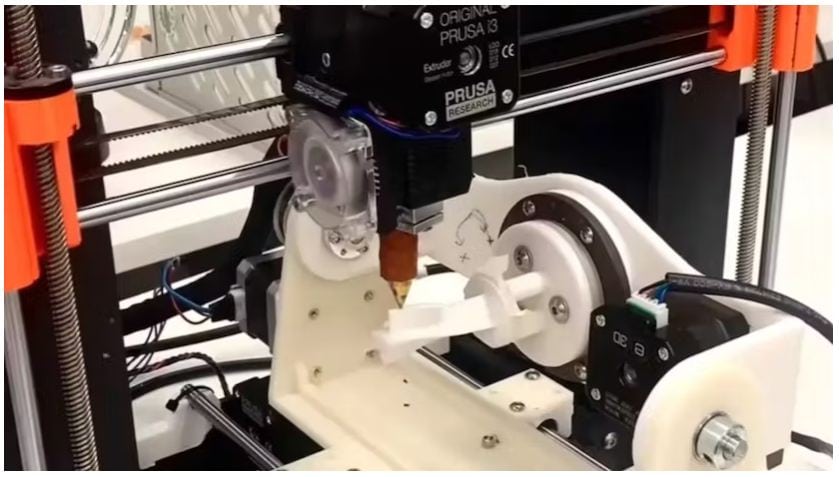While it is still very experimental, Open5x is an open source project to make five-axis 3D printing accessible to all.
In the world of CNC (computer numerical control) machining, three axes are just the beginning. Many machines have additional movement axes so that the tool can reach more areas and cut at more angles, which increases the capability. So why does every hobbyist/consumer 3D printer on the market still operate in three axes? It comes down to a combination of cost and software. While additional axes require additional motors and that will always cost more, the Open5x project brings five-axis 3D printing to the masses.
3D printing promises to make any geometry possible, but every 3D printing enthusiast can explain why that isn’t really true — at least not for FFF (fused filament fabrication)/FDM (fused deposition modeling) printing. A great example of this is the overhang, which is a feature that “floats” in midair. Support structures make it possible to print overhangs, but they have many downsides. Five-axis 3D printing gets us a lot closer to actually being able to print any geometry, and it improves quality at the same time.
A five-axis 3D printer like the kind you’d get with Open5x has the standard X, Y, and Z axes, plus U and V axes. The U axis rotates the bed around a line parallel to the Y axis and the V axis rotates around a line perpendicular to that. These extra axes let the printer reorient the bed or model, relative to the hot end, as necessary to achieve the best surface finish or to eliminate overhangs and bridges.
Imagine that you’re printing a part shaped like a “T” and it is standing straight up on the bed. A normal 3-axis 3D printer would need supports underneath the horizontal geometry at the top. But a five-axis machine could print the vertical geometry first, then simply tilt the model 90 degrees to print the “overhangs” without any supports needed. It can also reorient the model so that the outer “skin” is always perpendicular to the hot end, eliminating the stepped layer lines that we’re used to seeing.
There are many clear advantages to five-axis 3D printing, but slicing the model and generating the g-code becomes much more complex. Not only does the slicer need to perform all of the usual processing, it also has to identify the optimal orientation for the geometry and seamlessly integrate changes to that orientation during printing. Open5x includes a definition file for Grasshopper, which is a plug-in for Rhino CAD, to help with slicing.
On top of the software, the Open5x project includes everything you need to convert a Prusa i3 MK3 into a five-axis 3D printer. This upgrade requires a Duet 2 control board with the Duet X5 expansion, along with two more stepper motors. Some of the physical parts are 3D-printable, but it also needs some parts like bearings and shafts. Most of the upgrade cost comes from the Duet boards, because everything else is fairly affordable. This conversion should also work with printers similar to the i3 MK3—of which there are many.
If you’re interested in getting started with hobbyist five-axis 3D printing, there doesn’t seem to be a better choice than Open5x at this time.
Subscribe to AM Chronicle Newsletter to stay connected: https://bit.ly/3fBZ1mP
Follow us on LinkedIn: https://bit.ly/3IjhrFq
Visit for more interesting content on additive manufacturing: https://amchronicle.com




